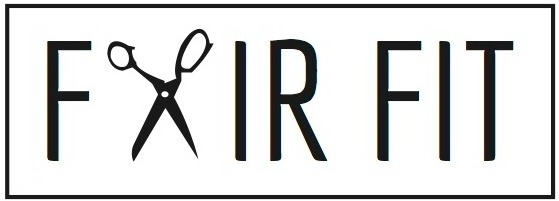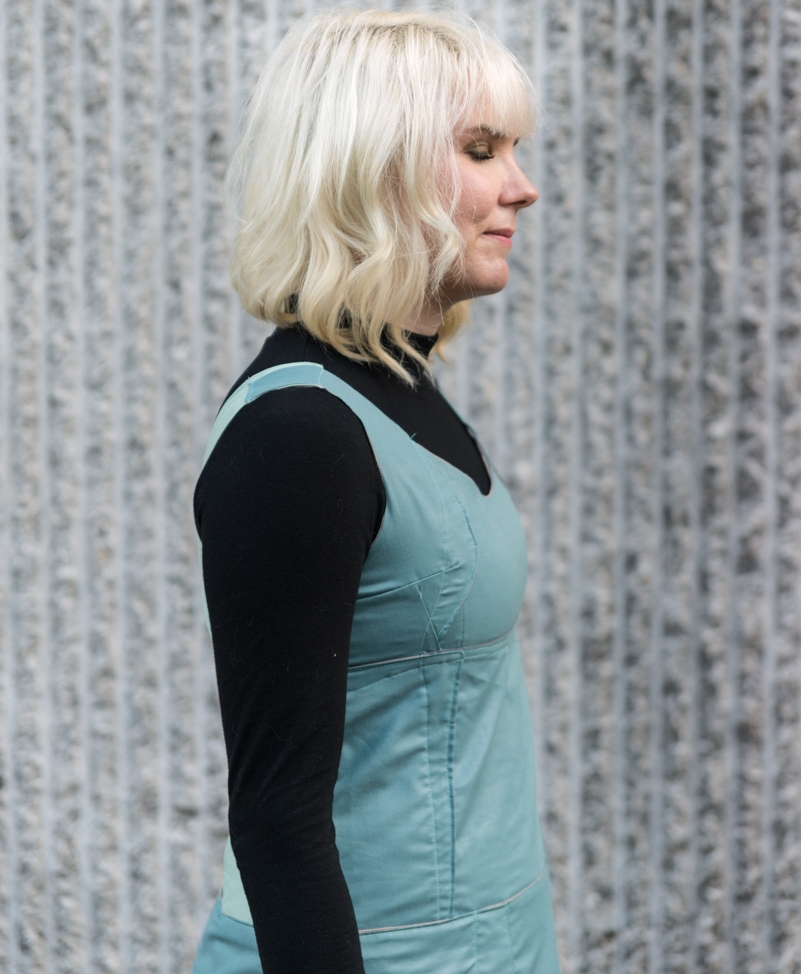The Process I Used to Create the Latest Fair Fit Dress Collection
I am thrilled to share with you today what I’ve been working on behind the scenes for the last 2 months! With the launch of the Fair Fit Method this past winter and the opportunity to share ideas and design projects within the course, I spent January and February coming up with new designs for the Fair Fit Dress with the intention of sharing these designs with the current Fair Fit Method students for the upcoming Learn and Make the Fair Fit Dress online course.
In January, I also knew that I would be creating a collection video for our blog and social media with my friend and collaborator Jill Hall. She had the idea of creating a “Dress Swap” video that tells the story of a day in the life of a fashionable woman who loves to sew her own clothing. The video shows her going through the day in variations of the Fair Fit Dress, demonstrating the versatility of the pattern and its capacity to design according to your unique lifestyle and wardrobe considerations.
And I adore how it came out (heart's eyes emoji times 3)! You can watch the full video here, and let me know what you think.
Video Credits: Directed and Produced by Jill Hall, Director of Photography and Cinematographer Abe Felix, Song by Paul Eastin, Dresses Modeled by Erika and Megan, and special thanks to Diane Leightman, Tom LaPann, and Chris Bergeron.
Because so much work went into this collection and the video, I have been slow to release it. Jill had it ready for me a week ago, and I literally squealed in delight because it truly captured the essence of the Fair Fit Method and the patterns and how you can customize them so many ways.
I didn’t just want to post it once on Instagram and have such a valuable asset only get a brief flash in the pan. As soon as she delivered the video to me, I realized how much it demonstrates design in action, designing around lifestyle choices, and using sewing to customize your daily life and make your experience with clothing more individualized and intentional.
I’ll be posting the video throughout the month, and writing about the different designs within the collection. I hope it not only inspires the Fair Fit Dress students who using the pattern to make their own dresses, but also our blog readers who are wardrobe sewists and designers themselves.
To see more of the variations, and preview of the patterns and process used to make the garments in this collection, I also made a look book! If you would like to see more of these Spring Summer Fair Fit designs, you can go here to this link and the pdf look book will be emailed to you. I will also follow up with more posts, videos, and helpful articles for sewists interested in custom design.
The collection was designed around the video
When Jill first came up with the idea for this video, we discussed having around10 dresses to express the idea of the dress switching according to the character’s activities. This would involve designing a collection- 10 dresses for me don’t just happen randomly, they must center around a theme and concept that helps develop the consistency and makes the dresses function as a whole. This video shows a day in the life of a fashionable woman who sews her own clothing, and the clothing that she sews functions well in her daily activities.
As opposed to other concepts I used in the past to design collections, this collection was focused around function and use of the clothing- it tells the story of who she is throughout her day, as opposed to some of my previous more make believe concepts. I really needed to consider what types of Fair Fit Dresses would suit her best, give her comfort in her daily wear, and provide the right kinds of materials and shapes to suit her daily activities in specific environments and situations.
The first question I had to consider… and which applies to any successful wardrobe sewist….
What does this character actually need in her closet?
This character has a full time job. So that means 50% of her week is going to be spent at work, so approximately 50% of the dresses needed to be work appropriate for her job and type of professional appearance best suited for her vocation.
We shot the work scenes at a local cooperative work space and the environment was well designed, with bright colors, contemporary furniture, clean lines, white space, and color blocking throughout the interior. I felt working in an environment like this gave her more freedom in her choice of dress and would also inspire her to be fashionable.
Photo by Paul Eastin
The environments we spend the most time in are often reflected in our choice of clothing. Her work environment informs her dress by presenting a similar level and type of design in her clothing. Clean lines and minimalist fabrics contrasted with interesting shapes and some color blocking is similar to the design of the office and the types of art, furniture, and interior design of the space. Dress 3, 4, 5, and 6 all considered that this character works in some kind of design or creative profession where her dress can be customized, yet the shapes and fabric I selected kept it work appropriate for client meetings, presentations, and comfort in a 9 to 5 environment.
The dresses could also be layered for different looks. The sleeveless dresses 3 and 4 were layered over basic pieces to create more versatile wear and to optimize how many ways the Fair Fit Dress can be worn.
Dress 3 : Photo by Paul Eastin
I also used a clean finish or mixture of clean (dress 3 and 4) and raw finish (see dress 5 and 6) in order to keep texture to a minimum and add professional polish to the looks.
But she’s not at work all the time…
We considered what her lifestyle would be, and the Mid City house and our local coffee shop gave us an idea of her personal life and where this character lives. Her neighborhood, which is also mine and Jill’s, is an area of town with cute houses and lots of emerging new businesses, and Jill and Abe (director of photography and the cinematographer) used the backdrop of our local businesses with their bright exteriors to give our video an artsy punch.
If this woman is sewing her own clothes, then she would have opportunities to customize the colors, sewing, and style of dress according to trends and her ability to use customization with the Fair Fit sewing and pattern to stand out. Dress 1 and 2 are my favorites, because they are entirely repurposed.
French Truck Coffee Mid City Baton Rouge : photo by Paul Eastin
Again… I took my husband’s clothes and cut them up
Yep, these 2 dresses are made from his pants and shirts, with the exception of the pleated waxed cotton skirt on dress 1. But folks, that’s still repurposed too- from our pleated skirt that I teach you how to make in Learn and Make the Fair Fit Skirt! I just ripped it off the waistband, and put it on the dress. I love this dress, in fact, I’m going to seam rip it and resize it so I can wear it, which yes, you can absolutely do with Fair Fit garments. I’m teaching you all about how to do that in our upcoming November course, Heirloom Repurpose.
This low waste policy cuts my costs
If I bought all this fabric, collections wouldn’t just be time expensive for me, they would be $$$ as well. And since my second collection, shown below, I’ve always used repurpose to create unique and memorable pieces. And this collection is no exception- Dress 1- repurposed from a men's Fair Fit shirt and a waxed cotton Fair Fit Skirt. Dress 2 repurposed from Paul's shirts. Dress 4 was resized for Erika from a previous collection. Dress 5 - repurposed from a Fair Fit Clean Finish A Line skirt, and Paul's shirt. Dress 6 repurposed from last fall's collection, Dress 7 repurposed from Paul's pants.
photo by Lily P Brooks
photo by Lily P Brooks
photo by Paul Eastin
Photo by Paul Eastin
photo by Lily P Brooks
Whoot- saving of textile waste, creating heirlooms and dresses of history, and saving me money. That’s my kind of making and I believe it makes me value the garments that much more.
Conclusion
While this is just an introduction to this month's and April's series into the design process for Fair Fit garments and collections, next week I’ll be able to start breaking down individual pieces. This is a good opportunity to look at wardrobe sewing as a whole. While you might not be making a collection for a project like a video, everything you make for your closet is a part of a collection. There are opportunities with garment construction be very intentional like we were for our character's lifestyle, as well as intentional in use of color, fabric, and material selection.
And this is what I share in Fair Fit Method courses and why I’m teaching and sharing my unique pattern. Not all patterns allow you to create as much customized personal choice and variation, and in particular offer as much opportunity for reuse and sustainable practices.
Coming up: A look at Dress One and it's design process from sketch to sew.























